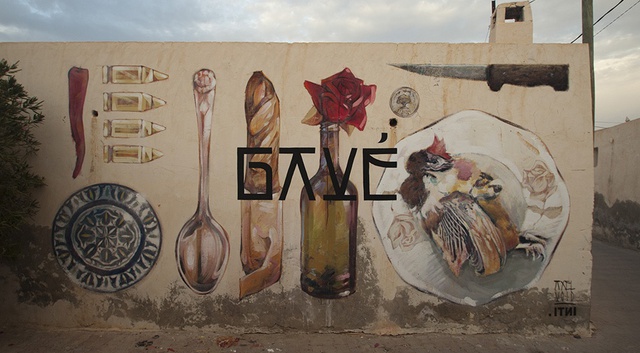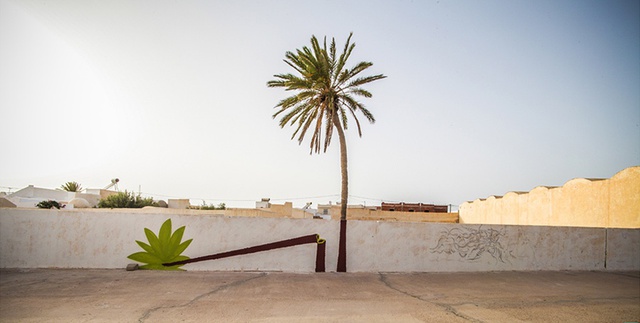News
Djerbahood
Erriadh is the Home of the ‘Street’
Erriadh, a peaceful village punctuated by its whitewashed houch, with splashes of colour enhancing the doorways and the bougainvillea, snowed under with flowers, is a village that reflects Tunisia's multiculturalism. It is situated on the island of Djerba next to El Ghriba, which was built in 1920 in exactly the same spot as the oldest synagogue in Africa.
And for a few weeks now, other colours and other strokes have inhabited Erriadh's facades, archways, and nooks and crannies. This is because over 100 street artists from over 30 countries have been arriving here for Djerbahood at the invitation of Mehdi Ben Cheikh, the founder of Galerie Itinerrance, which initiated this project after the Paris 13 tour. One after the other, over the course of a week, they arrived with one mission: to express their creativity. During the months of July and August, the neighbourhood teemed, the streets hummed, the atmosphere changed imperceptibly. People sat on the edge of the pavement and commented on the proceedings, trying to guess what the artist was going to create.
The Itinerrance gallery, founded in 2004 by Mehdi Ben Cheikh, has a goal to promote the recognition of street art as a fully-fledged art form. The name of the gallery itself gives a special resonance to the project, resting on a concept that brings together the idea of a route (l'itinéraire) and the notion of wandering (l'errance). Of course, street art is not structured and organized in the classical sense, but rests upon pathways which one takes to get from one place to another, and the wandering afforded to us by the fabric of the city.
The development of this urban fabric has offered a new platform for expression: the street and its buildings. They are the new site of oral expression in terms of physical demonstrations, but they are also the site of artistic expression. Street art's origins can be found in the USA in the 70s in tag and graffiti and then with hip hop culture, where graffiti artists imposed their style. Graffiti came to Europe in the 1980s. The authorities fought staunchly against the movement, which exacerbated artists' demands for the freedom to create work. In the 1990s, a new generation of artists appeared who wanted, above all, to open up spaces for dreaming in all our post-modern cities, to create real urban tableaux that one discovers unexpectedly.
After the 2011 revolution in Tunisia, in its quest for freedom, has seen its walls covered in drawings that call out politically and aesthetically. The silenced youth identified strongly with this art form linking creativity with rebellion and, as such, the form has been developing.
Djerbahood shows the diversity of this fully-fledged art form, and how artistic production and even traditional architecture can come together. To wander through the streets of Erriadh is to discover the strange characters of Phlegm, the cats with their eyes set on C215, the poetic hands of Knowhope, the colourful interlacing of El Seed or the azulejos of Add Fuel.
But above all, Djerbahood is a present from artists to the inhabitants of Erriadh and its visitors. The exhibition demonstrates how different approaches and ideas can exist together.
This event was the subject of a series of ten, four-minute episodes by Cécile Quiroz and Joëlle Matos, on show every Tuesday and Friday from 5 September at ARTE Creative.


